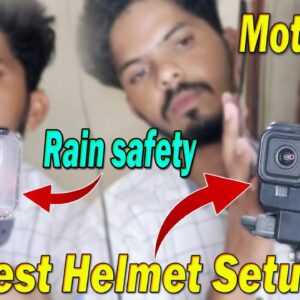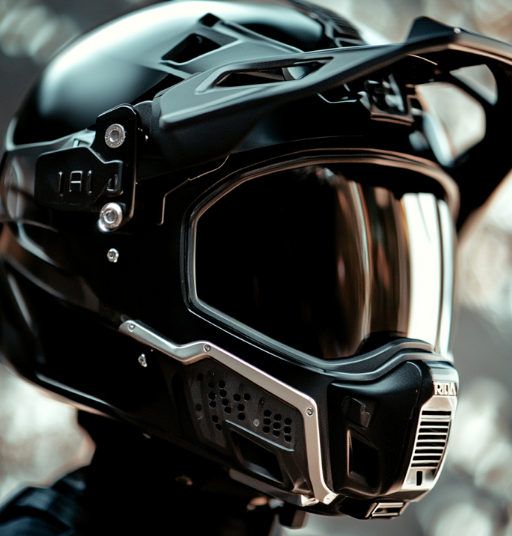Complete Guide to Setting Up Your Helmet Camera for Moto Vlogging: Exploring the Differences between GoPro and Action Cameras
Introduction
Are you an adrenaline enthusiast who loves to combine your passion for motorsports with vlogging? Do you want to document your motorcycle trips and share them with your audience? If you answered yes to both of these questions, then you need to set up your helmet camera for moto vlogging.
Setting up your helmet camera can be frustrating, especially if you don’t know what you’re doing. This is why we’ve created this complete guide to help you set up your helmet camera for moto vlogging. We’ll also explore the differences between GoPro and Action Cameras, two of the most popular helmet camera brands out there.
So, whether you’re a beginner or an experienced moto vlogger, this guide is for you.
GoPro vs Action Cameras: Which One to Choose?
Before we delve into the specifics, let’s start by exploring the differences between GoPro and Action Cameras. Both brands are popular among moto vloggers, but which one should you choose?
GoPro Cameras
GoPro is probably the most popular helmet camera brand out there, and for good reason. GoPro cameras are known for their durability, versatility, and high-quality footage. The latest models also have image stabilization, which makes them perfect for action shots.
GoPro cameras also come with a range of accessories, such as mounts, batteries, and waterproof cases. This makes them ideal for outdoor activities like motorcycling.
Action Cameras
Action Cameras, on the other hand, are a relatively new player in the market. They’re designed specifically for extreme sports and outdoor activities, making them perfect for moto vlogging.
One of the main advantages of Action Cameras is their small size. They’re much smaller than GoPro cameras, which makes them easier to mount on your helmet without adding too much weight.
Action Cameras also have a wider field of view than GoPro cameras, which means you can capture more footage in one shot.
Which One Should You Choose?
The answer to this question depends on your personal preferences. If you want a camera with advanced features and a wide range of accessories, go for GoPro. On the other hand, if you want a compact camera that’s easy to mount on your helmet and has a wider field of view, go for an Action Camera.
Setting Up Your Helmet Camera
Now that you’ve chosen your camera, it’s time to set it up on your helmet. Here’s a step-by-step guide to help you:
- Attach the mount: Most helmet cameras come with a mount that you need to attach to your helmet. Make sure to attach it securely, and check that it’s level before you start recording.
- Install the camera: Once the mount is attached, you can install the camera on it. Make sure the camera is facing forward and that it’s secure.
- Test the camera: Before you start recording, test the camera to make sure it’s working correctly. Check that the footage is stable and that the audio is clear.
- Adjust the settings: Depending on your camera, you may need to adjust the settings before you start recording. Make sure to set the resolution and frame rate to the highest possible settings.
- Start recording: Once you’re satisfied with the settings, you can start recording. Make sure to press the record button before you start riding.
Tips for Moto Vlogging
Now that you’ve set up your helmet camera, it’s time to start vlogging. Here are some tips to help you:
- Plan your route in advance: Before you start riding, plan your route and decide what you want to vlog about. This will help you stay focused and create more engaging content.
- Speak clearly: When you’re recording, make sure to speak clearly and loudly enough for your audience to hear you. This will make your content more engaging and easier to understand.
- Edit your footage: Once you’ve finished recording, it’s time to edit your footage. Make sure to remove any unwanted footage and add some music or effects to make it more interesting.
- Share your content: Once you’ve edited your footage, it’s time to share it with your audience. You can upload it to YouTube, Vimeo, or any other platform that you prefer.
Conclusion
Moto vlogging is a fun and exciting way to share your passion for motorsports with the world. With the right equipment and a good plan, you can create engaging and entertaining content that will keep your audience coming back for more.
By following the tips and steps outlined in this guide, you can set up your helmet camera and start vlogging like a pro. So, what are you waiting for? Hit the road and start recording!
FAQs
- What’s the difference between GoPro and Action Cameras?
- Which camera is better for moto vlogging?
- How do I set up my helmet camera?
- What tips do you have for moto vlogging?
- Where can I share my moto vlogging content?


